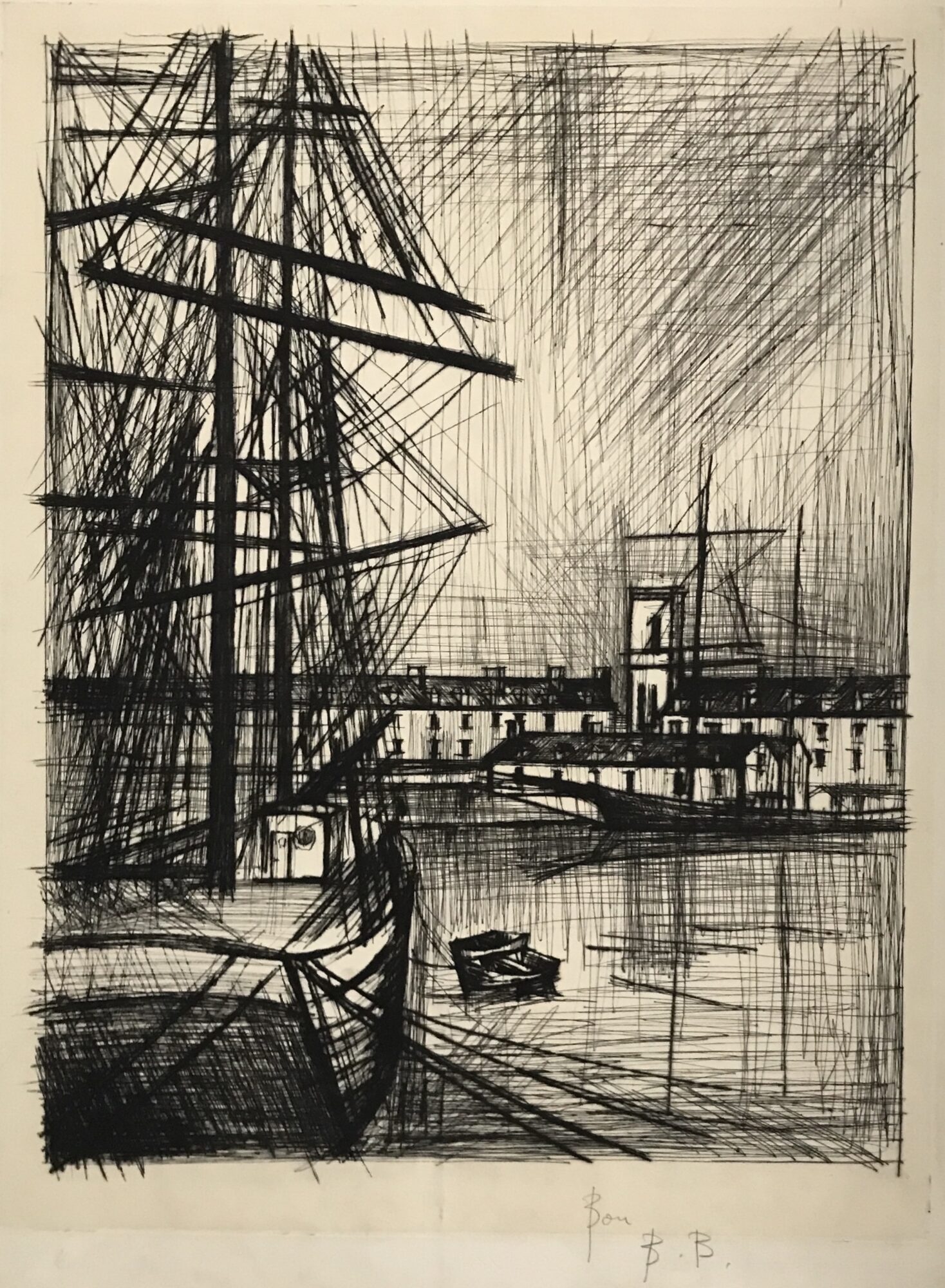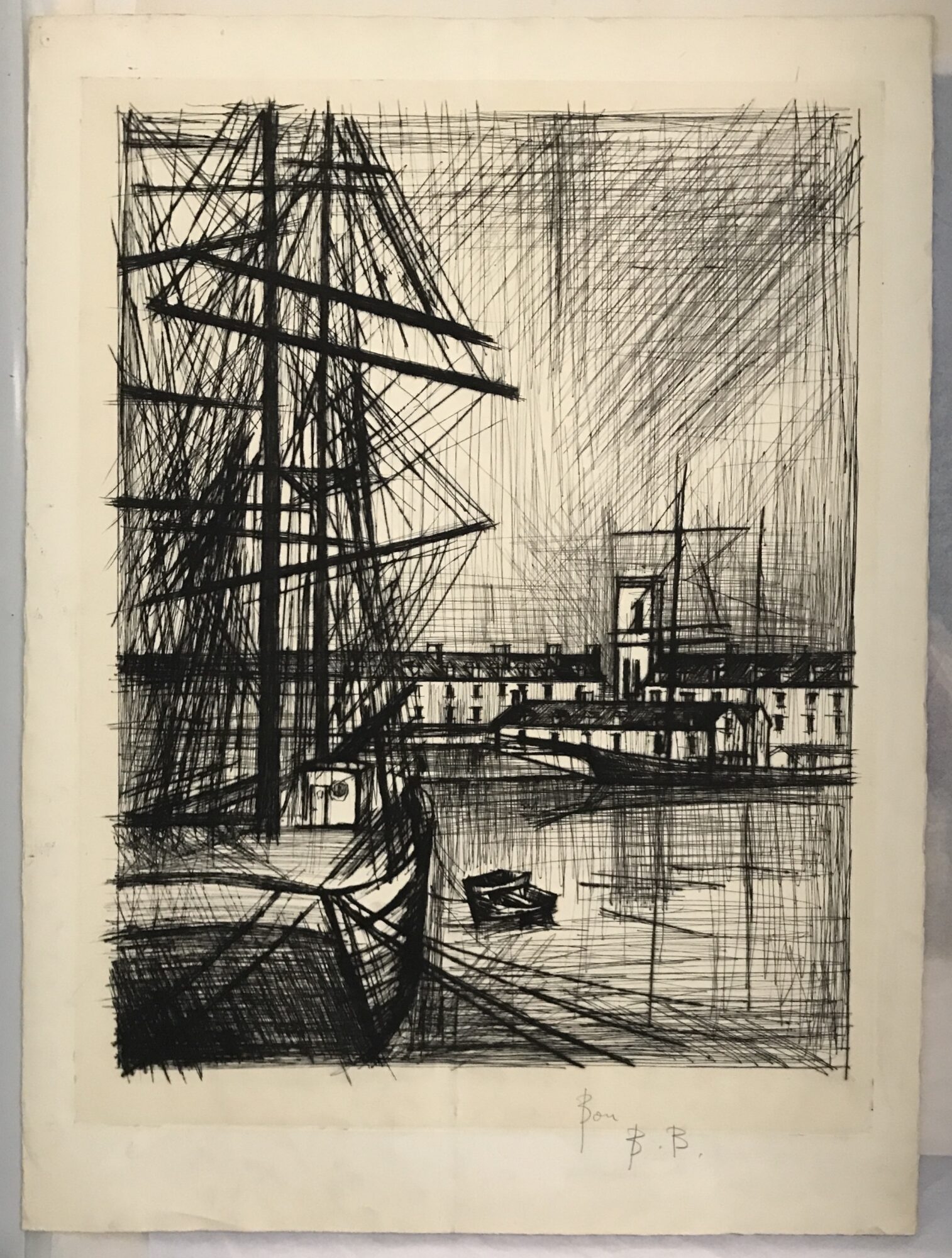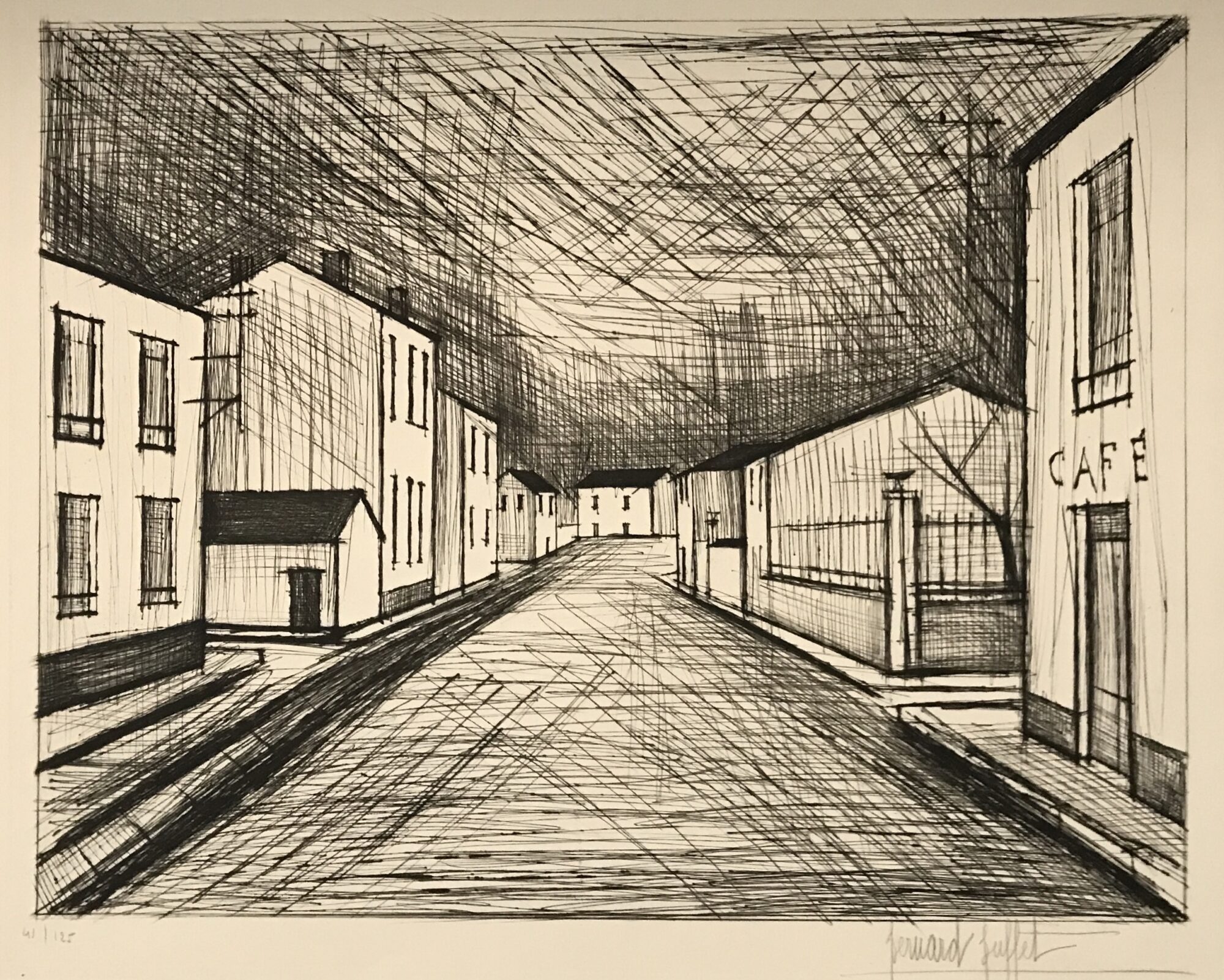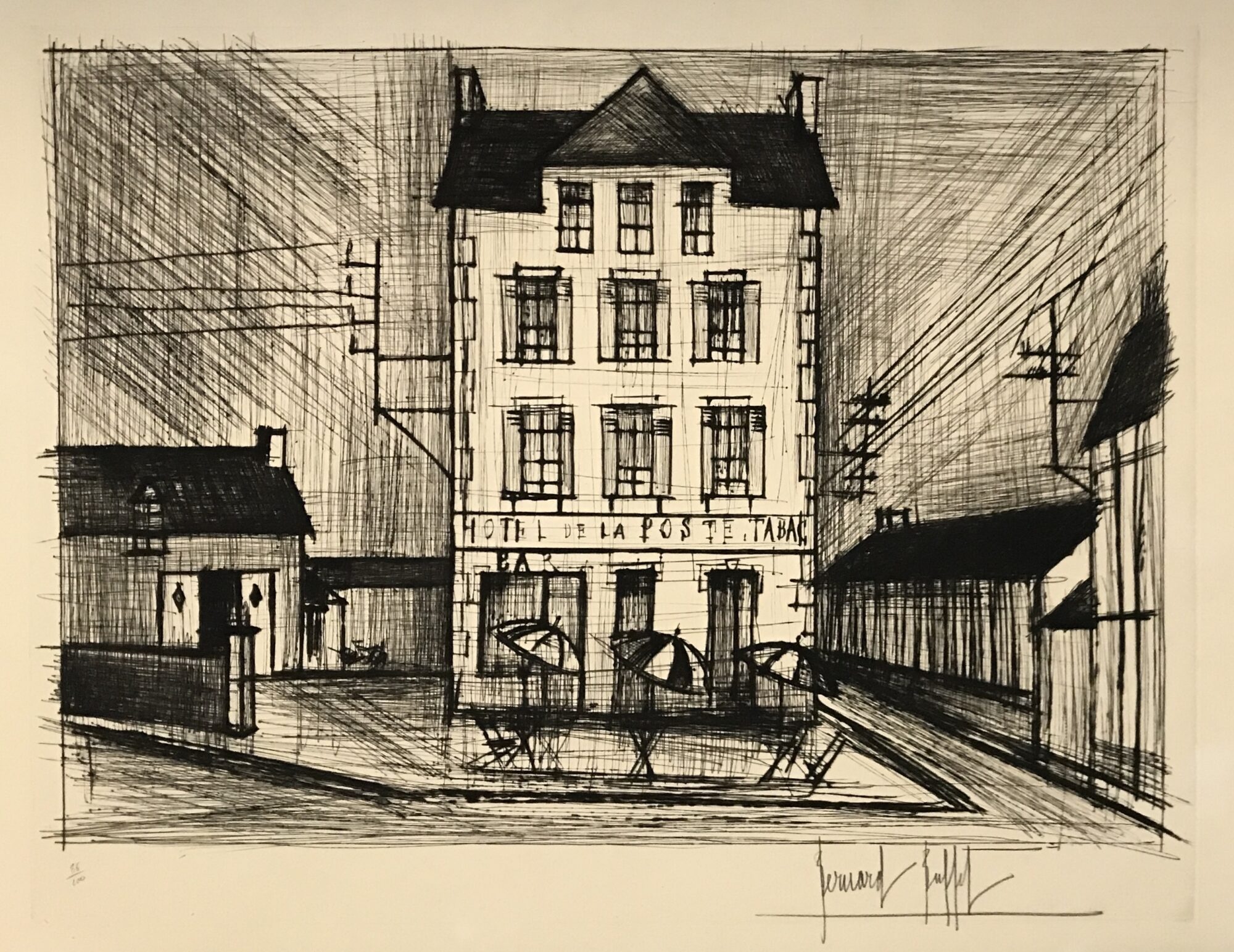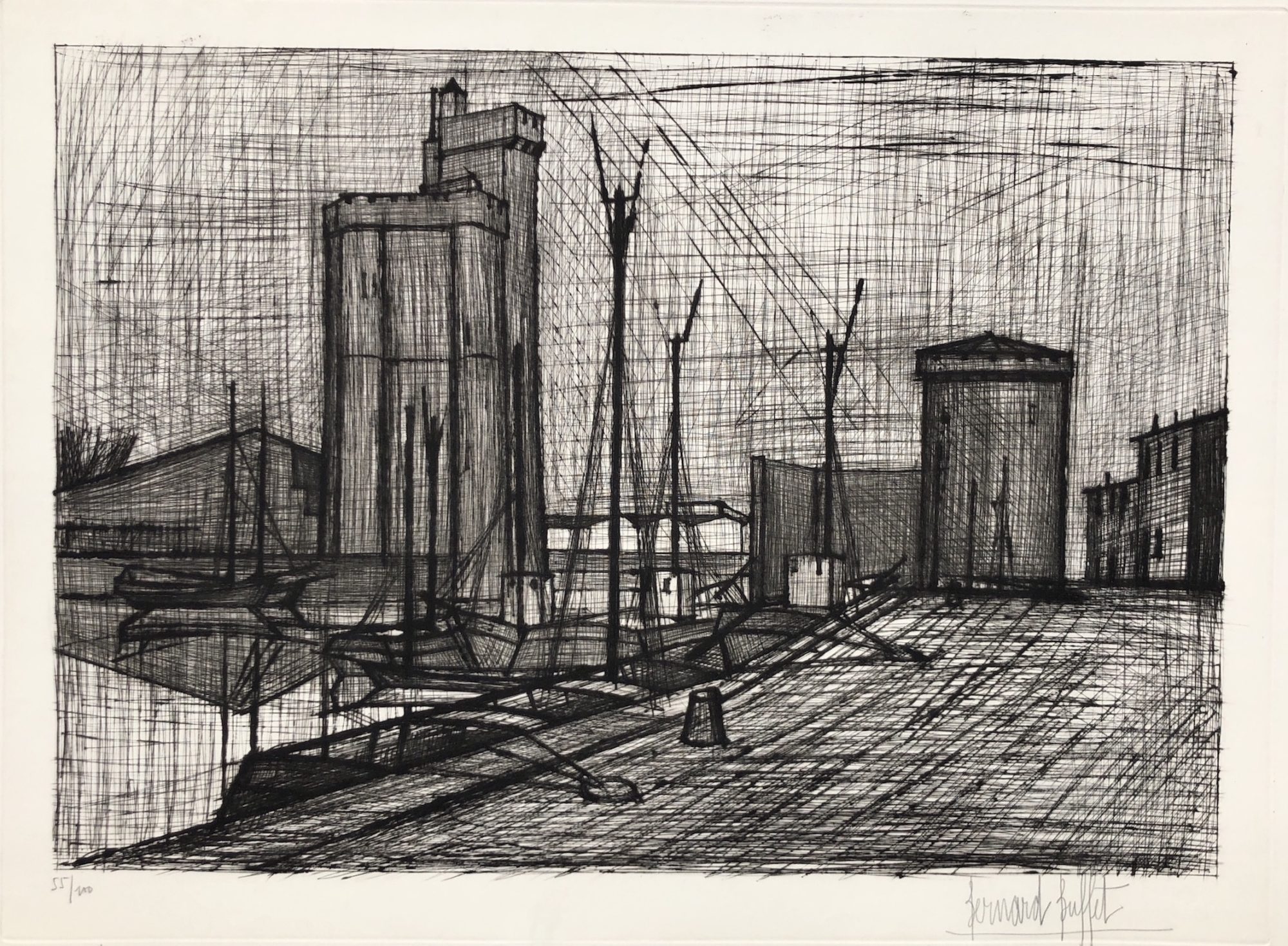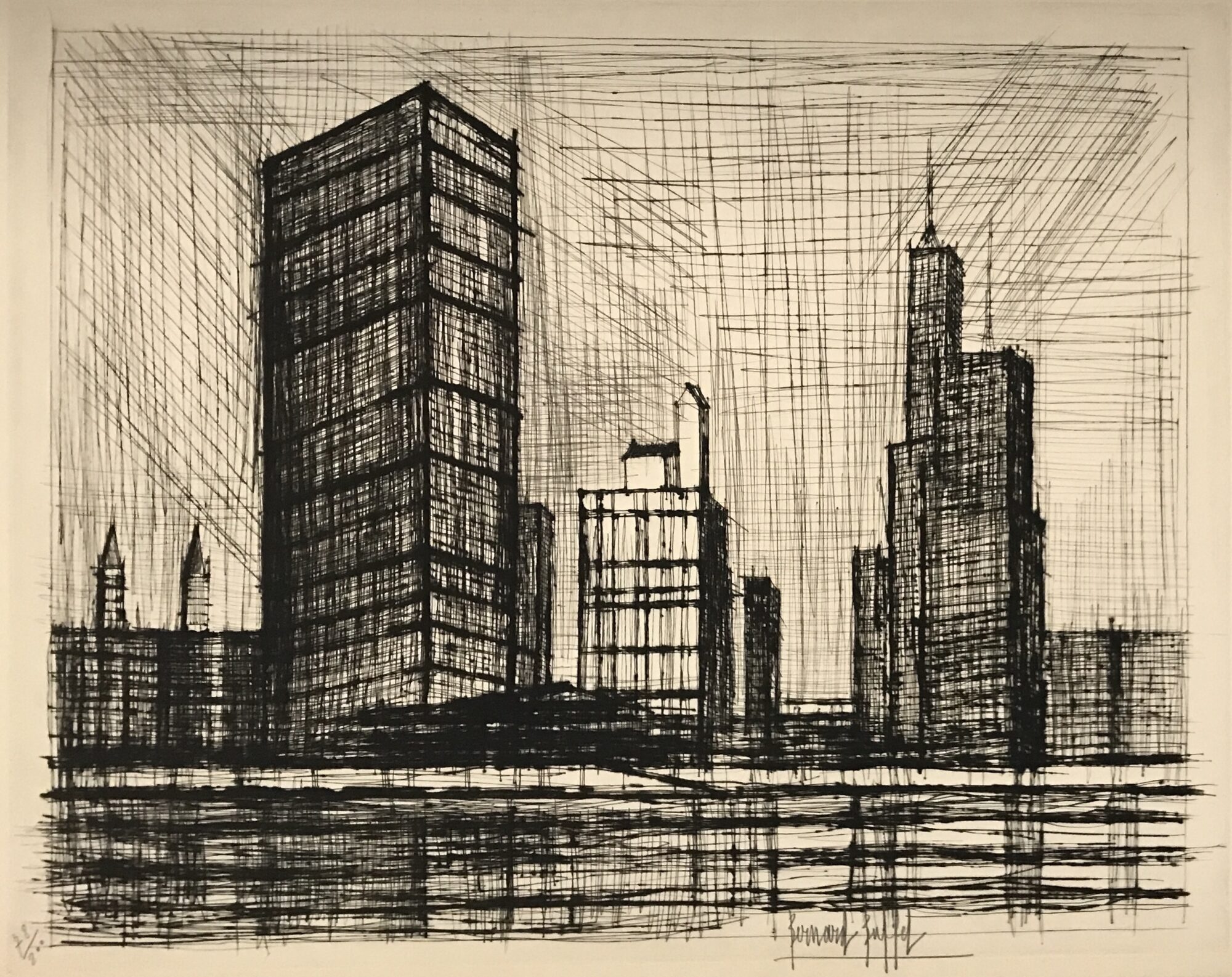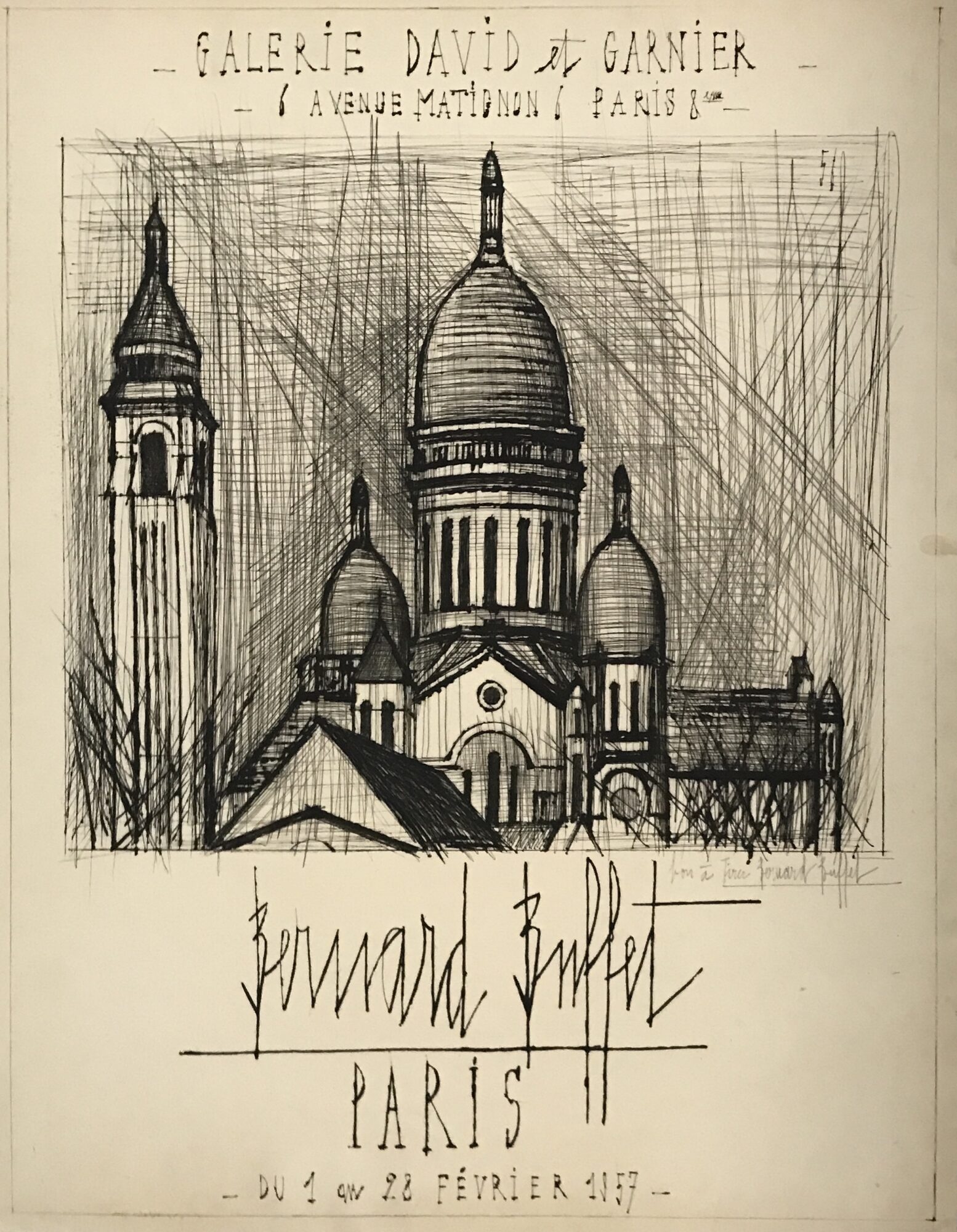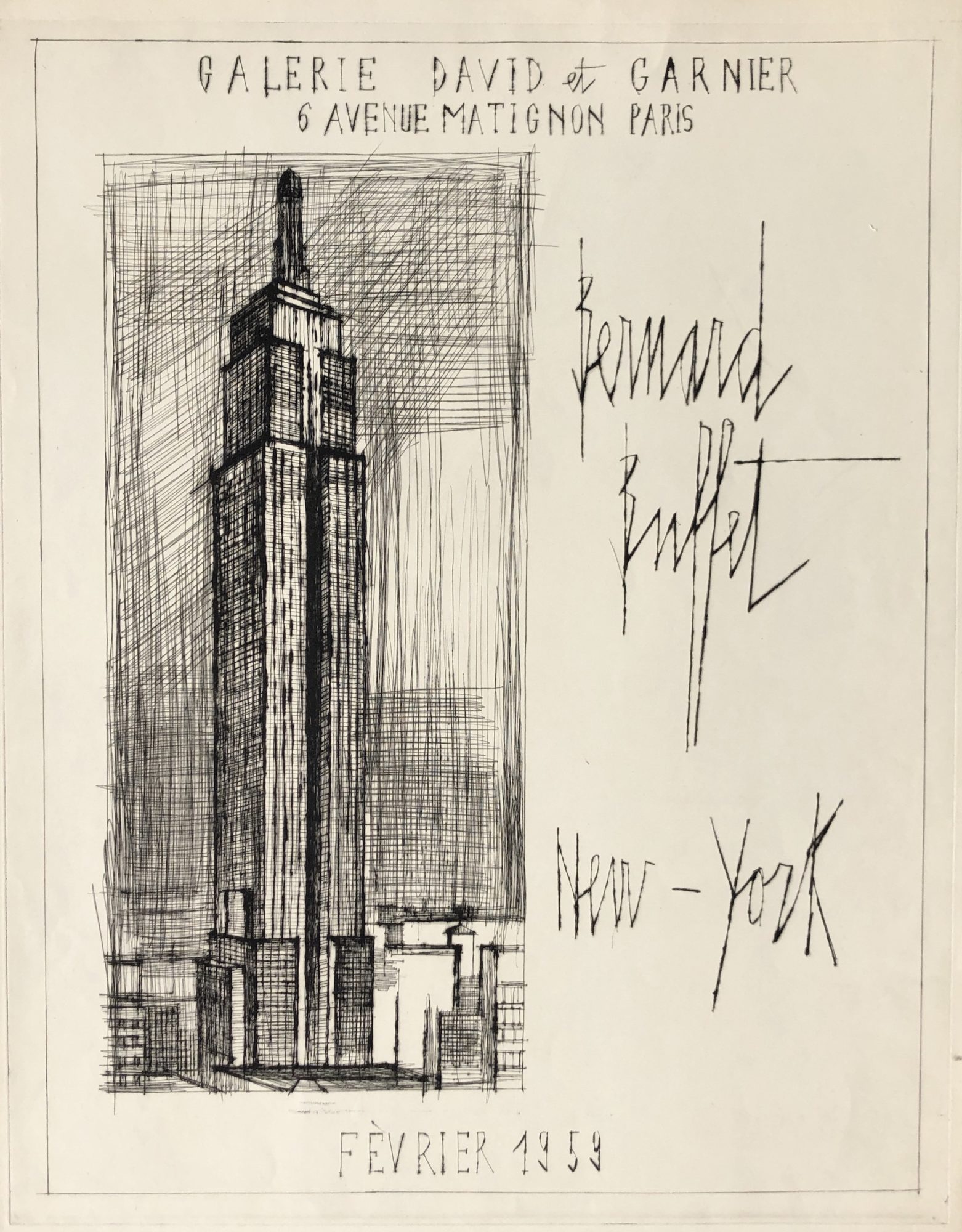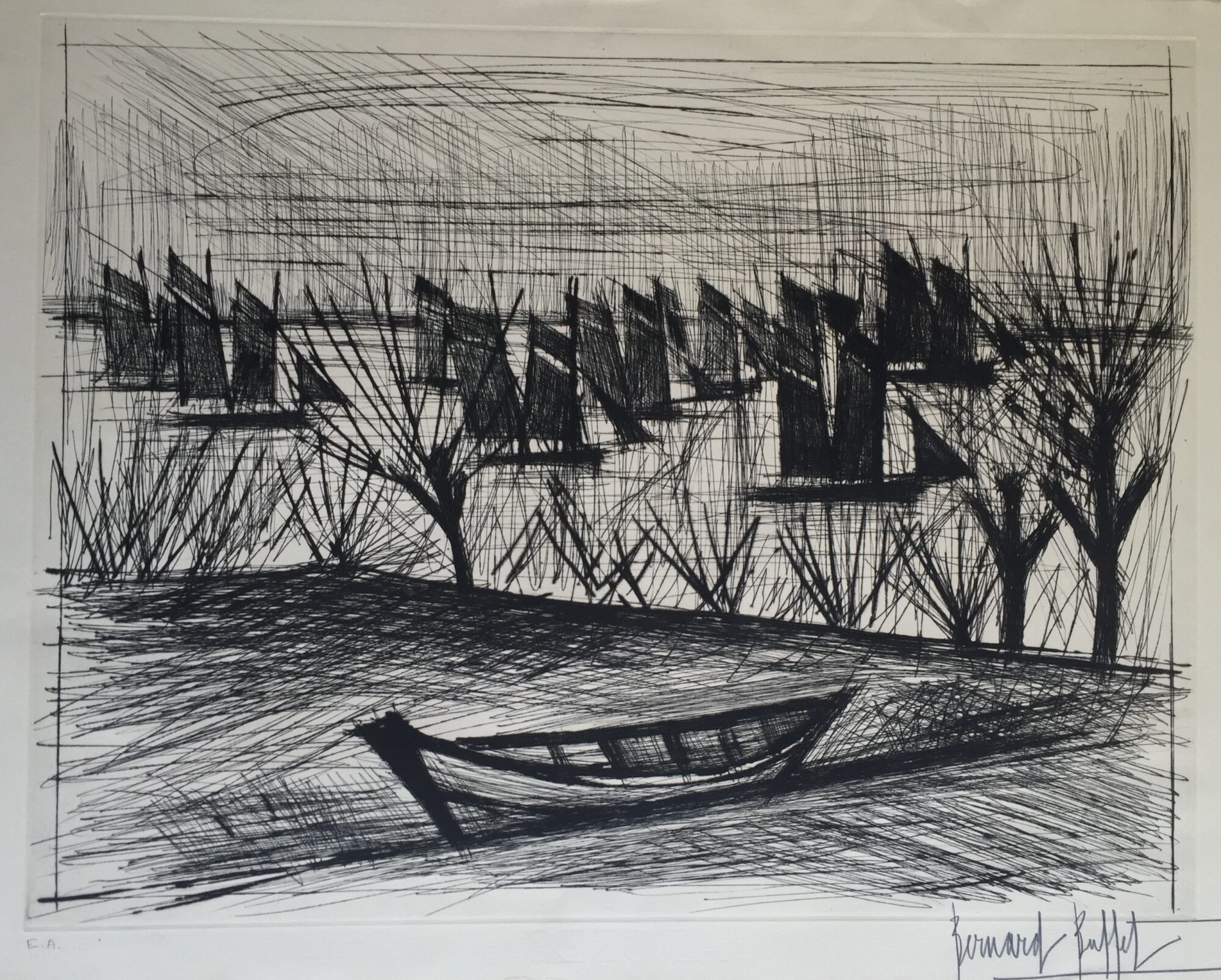Bernard Buffet – Terre-Neuvas
Bernard Buffet, Terre-Neuvas is an etching on Arches Paper. This print is initialed in the lower right and annotated with the word “Bon” above the initials (meaning “Bon a Tirer”). Published by ‘Editions Lacouriere Galerie David et Garnier’ and printed by ‘Atelier Lacouriere’ et Frelaut. Rheims 56.
Bernard Buffet’s works conveyed the anxiety that permeated France during the Nazi occupation and came to dominate the post-war figurative art scene. A member of a group called L’Homme Témoin (The Witness) along with Bernard Lorjout and André Minaux, Buffet developed a realist style infused with social criticism, featuring a restrained palette and black outlines.
In Terre-Neuvas, Buffet’s shows an austere vision of the world that chimed perfectly with the atmosphere of post-war alienation championed by the fashionable existentialist philosophy of Jean-Paul Sartre.
| Title | Terre-Neuvas |
|---|---|
| Medium | Etching |
| Year | 1966 |
| Edition | BAT |
| Catalogue Raisonné | Rheims 56 |
| Signature | Initialed |
| Size | 30 x 22 (in) 77 x 57 (cm) |
| Price | SOLD |
Description
Bernard Buffet, Terre-Neuvas is an etching on Arches Paper. This print is initialed in the lower right and annotated with the word “Bon” above the initials (meaning “Bon a Tirer”). Published by ‘Editions Lacouriere Galerie David et Garnier’ and printed by ‘Atelier Lacouriere’ et Frelaut. Rheims 56.
Bernard Buffet’s works conveyed the anxiety that permeated France during the Nazi occupation and came to dominate the post-war figurative art scene. A member of a group called L’Homme Témoin (The Witness) along with Bernard Lorjout and André Minaux, Buffet developed a realist style infused with social criticism, featuring a restrained palette and black outlines.
In Terre-Neuvas, Buffet’s shows an austere vision of the world that chimed perfectly with the atmosphere of post-war alienation championed by the fashionable existentialist philosophy of Jean-Paul Sartre.
Although frequently viewed as heavy and foreboding, there is also a level of beauty in the work of Bernard Buffet. His style is defined by “dry” straight lines revealing the shape of buildings and bodies. His works show elongated, emaciated figures and structures and lend a feeling of despair and loneliness. He shows Paris itself, traditionally portrayed as lively and colorful, in a hard and lifeless manner. While predecessors like Renior and Caillebotte used rain and stippled light to give beauty to each Parisian world they depicted, Buffet shows us the grace in the city’s structure, relying on the importance of drawing, the basis of all great work. This fundamental and visually heavy approach actually shows us the underlying beauty of such a popular and visually pleasing city.
Buffet was born in Paris in 1928 and grew up during the Nazi occupation, enduring the war and years of deprivation, and the experience inspired much of the glum imagery in his work. He excelled in painting and drawing, winning prestigious prizes and attracting attention with a signature style recognizable by thick, angular black lines that outlined his somber themes.
Additional information
| Title | Terre-Neuvas |
|---|---|
| Medium | Etching |
| Year | 1966 |
| Edition | BAT |
| Catalogue Raisonné | Rheims 56 |
| Signature | Initialed |
| Size | 30 x 22 (in) 77 x 57 (cm) |
| Price | SOLD |


